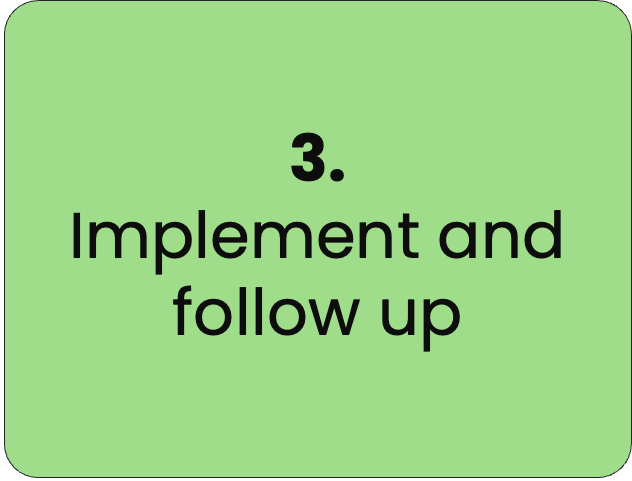Internal communication in the strategy process
Share this article
Communication is one of the most critical aspects of the planning process. It involves effectively and clearly communicating your plans, objectives and strategies to all relevant stakeholders, including team members and other interested parties. In this chapter we will explore the importance of communication and how you can ensure your plan is well communicated to drive it forward.
Why is communication important?
Communication helps you to:
- Build understanding: It ensures that all parties involved have a clear and shared understanding of the plan's objectives and strategies.
- Motivate the team: By communicating clearly, you can motivate your team and keep them committed to achieving the goals.
- Prevent misunderstandings: Clear communication reduces the risk of misunderstandings, errors and unmet expectations.
Steps for Effective Communication
1. Identify the target audience: Start by identifying your key stakeholders and target audience. This could be your team, managers, investors or other stakeholders.
2. Customise the message: Adapt your message to each target group. What are their specific interests and needs?
3. Clear and concrete language: Use clear and concise language that is easy to understand. Avoid technical or complicated language unless necessary.
4. Use visual communication: use visual aids such as charts, graphs or presentations to support your message.
5. Two-way communication: create an open channel for dialogue and questions. Let others share their opinions and concerns.
6. Regular communication: Schedule regular communication meetings or updates to keep everyone informed of progress.
7. Be honest about challenges: If problems or challenges arise, be honest about them and communicate what is being done to solve them.
Learn more about how GoalEnvision helps you communicate your strategy...
Example: Communication
Let's use an example to illustrate communication. Suppose you are planning to introduce a new work process in your company to increase efficiency.
- Target group 1: Your team of employees.
- Target group 2: Managers and leaders.
To communicate this to your team, you can:
- Hold a meeting where you explain the purpose of the new work process and how it affects their work.
- Give examples of the expected benefits and how it can help them become more efficient.
- Open up for questions and discussion to ensure they understand and are comfortable with the change.
To communicate to managers and leaders, you can:
- Send a written report that details the new process and its potential impact on company performance.
- Offer the opportunity for individual meetings to answer any questions or concerns they may have.
Conclusion
Communication is a key component of the planning process. By communicating clearly and effectively, you can build understanding, motivation and trust with your stakeholders, which is crucial to driving your plan forward. Regular and customised communication is key to keeping everyone informed and engaged in the implementation of the plan.
Share this article
Did you like this article? Here is more...
Latest




